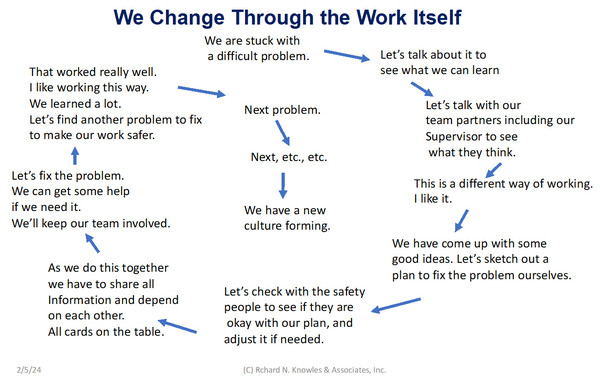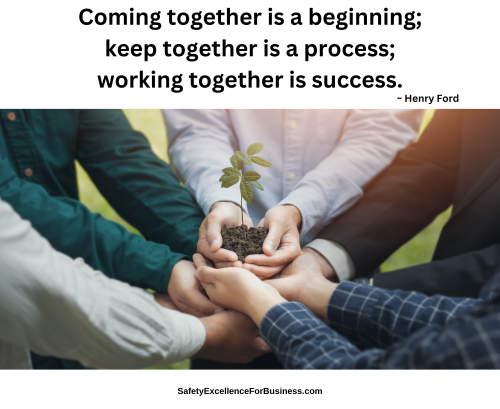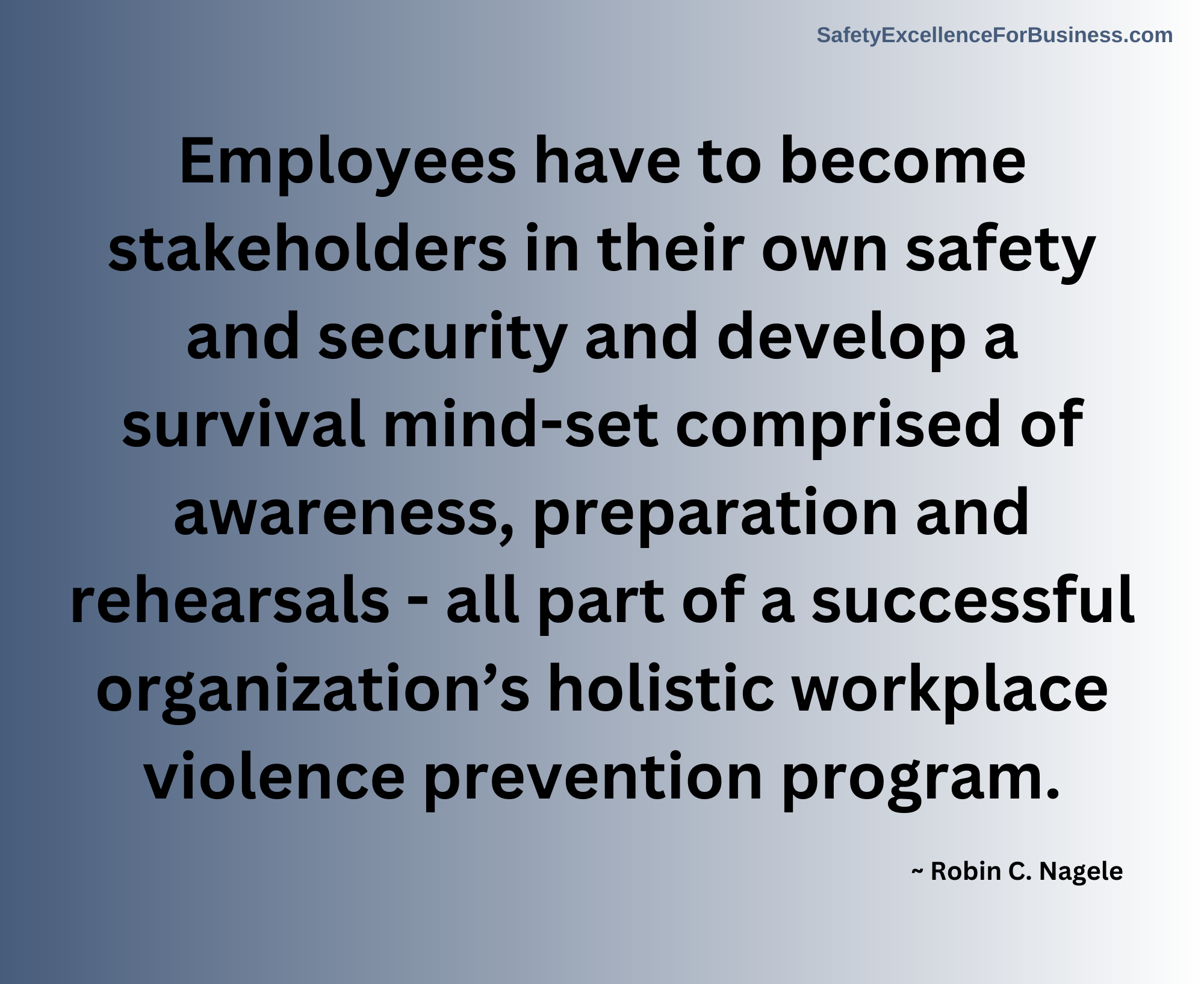An important dimension of workplace safety is eliminating workplace violence.
Examples of this workplace violence are lack of respect, bullying, sexual harassment, fights, and even murders. These are all on a continuum of behaviors which get more and more serious across the progression.
According to the US Bureau of Labor Statistics, for 2022 (the most recent summary), there were 5,283 fatalities at work and 740 of these were homicides. The number of women who were murdered was 140, which is the second highest cause of death for women in the workplace. Murder was the 5th highest cause of death for men.
These are sad situations for the families and the business coworkers. These murders cost the businesses a lot of money and bad publicity. But bullying and sexual harassment cost the people and the businesses a whole lot more because they are so widespread.
A recent Gallop poll found that over 50% of all our businesses struggle with bullying and sexual harassment problems. Unfortunately, most businesses ignore these problems hoping they will go away. They won’t go away and they are eating up a lot of profits.
These behaviors cause a lot of suffering among the people and they eat up a lot of time in a number of ways.
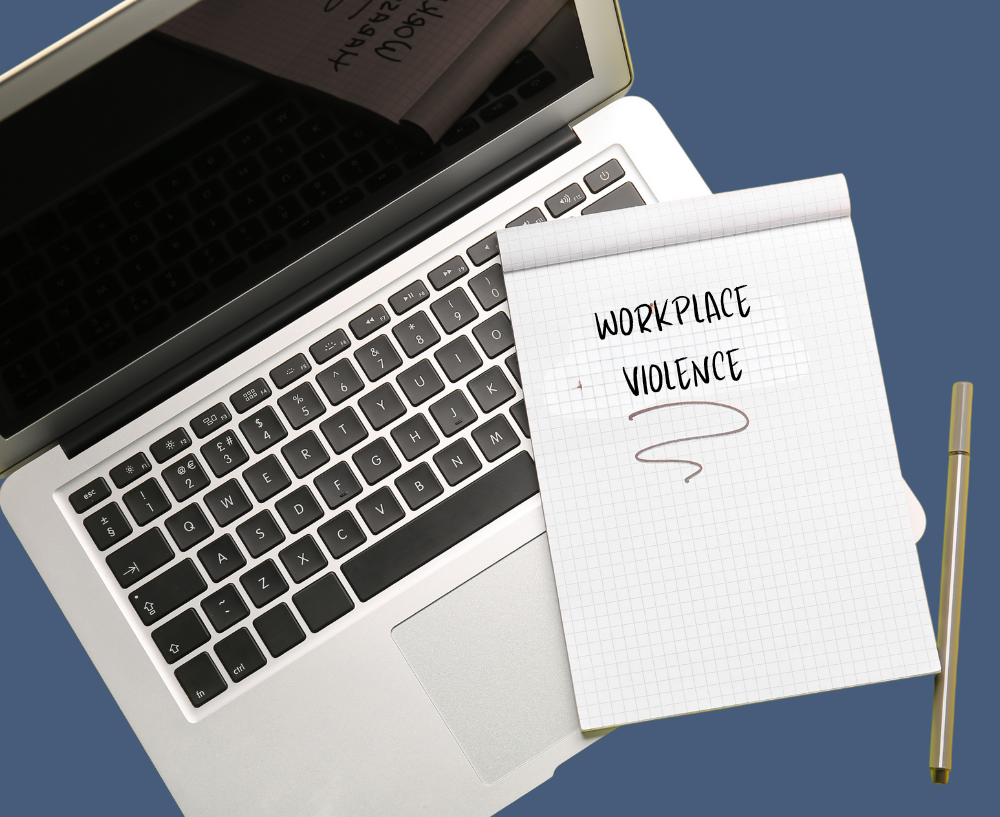
A Deeper Look
Let’s consider an organization with 100 people, with an average salary of $25 per hour. The organization has decided to do some training, or it is required by the state in which they do business to do mandatory training. So they bring in a consultant and have a one hour training session for everyone. This may cost $3,000 for consultant fees and lost wages of the people sitting in the session. These sessions do not solve many problems, but management gets their “ticket” punched.
Based on the Gallop study, about 50 of these people in this organization are engaged in bullying and/or sexual harassment. Each time someone gets pushed around, they may lose a half an hour of work because they are upset. If there are 200 incidents a year, there is another $62,000 in lost wages; there are probably a lot more than just 200 incidents. Suppose 20 of these bullying events are serious enough that management and human resources gets involved. We have another $5,000-$10,000 a year in lost wages.
Sometimes someone eventually gets terminated so now human resources, legal, and management are involved. Then we need to replace that person so we could lose up to $15,000 for this event. All this stuff adds up and for this 100-person organization. the lost costs could be around $100,000 a year.
But there is even a potentially bigger loss that can happen.
When there is bullying and harassment behaviors in the organization, people won’t talk together unless they have to. When the organization is free of these dysfunctional behaviors, people talk together and learn. New ideas often emerge which can be big possibilities for new earnings. I have seen this happen with people generating big savings through improved procedures which none of us had even realized possible before the conversations. These sorts of improvements could easily exceed the losses from the bad behaviors.
For example, when I was the DuPont Belle, West Virginia Plant Manager, we had one operation that made a variety of products. These were all synthesized in the same equipment. We would run a campaign of one product, take the equipment apart, clean everything out, and put it back together. Then we would synthesize the next product, followed by another clean out; and so on, and so on.
The job of taking things apart, cleaning everything, and reassembling them was taking about 7 weeks. After we had rooted out the bullies and had formed teams, the people were talking openly together about how to improve things. One day I discovered that their team had been talking together about how to make improvements and had shortened the time between campaigns from 7 weeks to just 5-6 days. This enabled us to significantly expand our production capability, and it was free. A traditional approach would be to build new equipment, which would have cost several hundred thousand dollars.
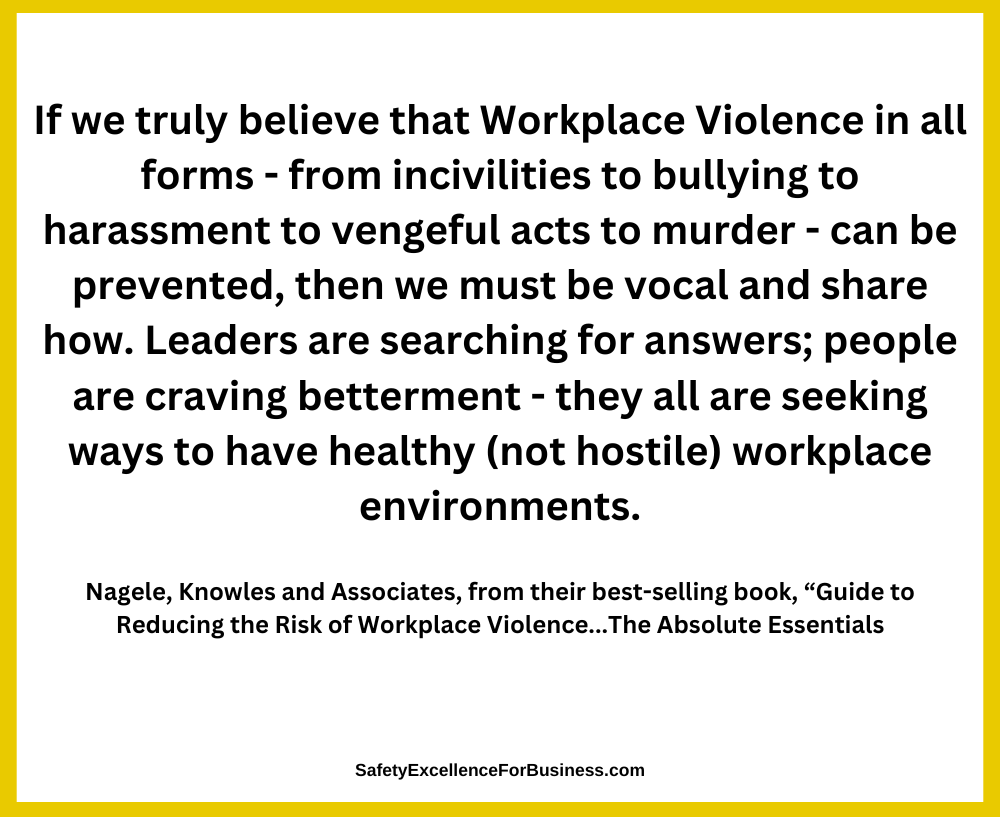
Wrapping Up
Developing respect and driving out bullying, sexual harassment, and other dysfunctional behaviors like lying and cover ups, are not just nice things to be doing. There is a big impact on improving the morale and openness in the organization, which is very good. And there is also a big impact on the potential lower costs and higher earnings for the organization as new ideas emerge from their conversations.
When these dysfunctional behaviors are driven out, everything gets so much better for both the people and the business.
Call me (716-622-6467) or email me. Let’s chat about how your organization can make a marked difference for reducing workplace violence across the spectrum.
